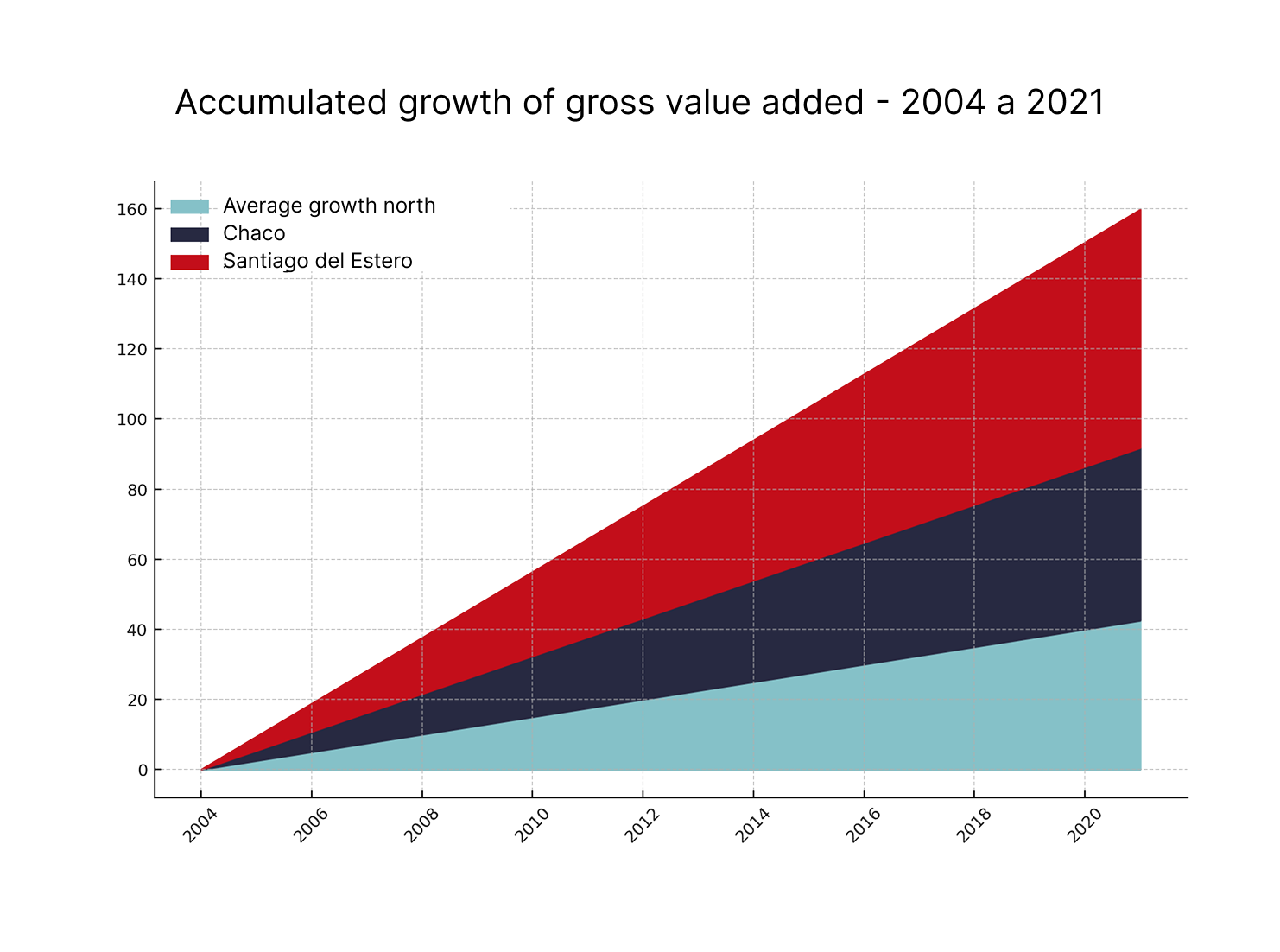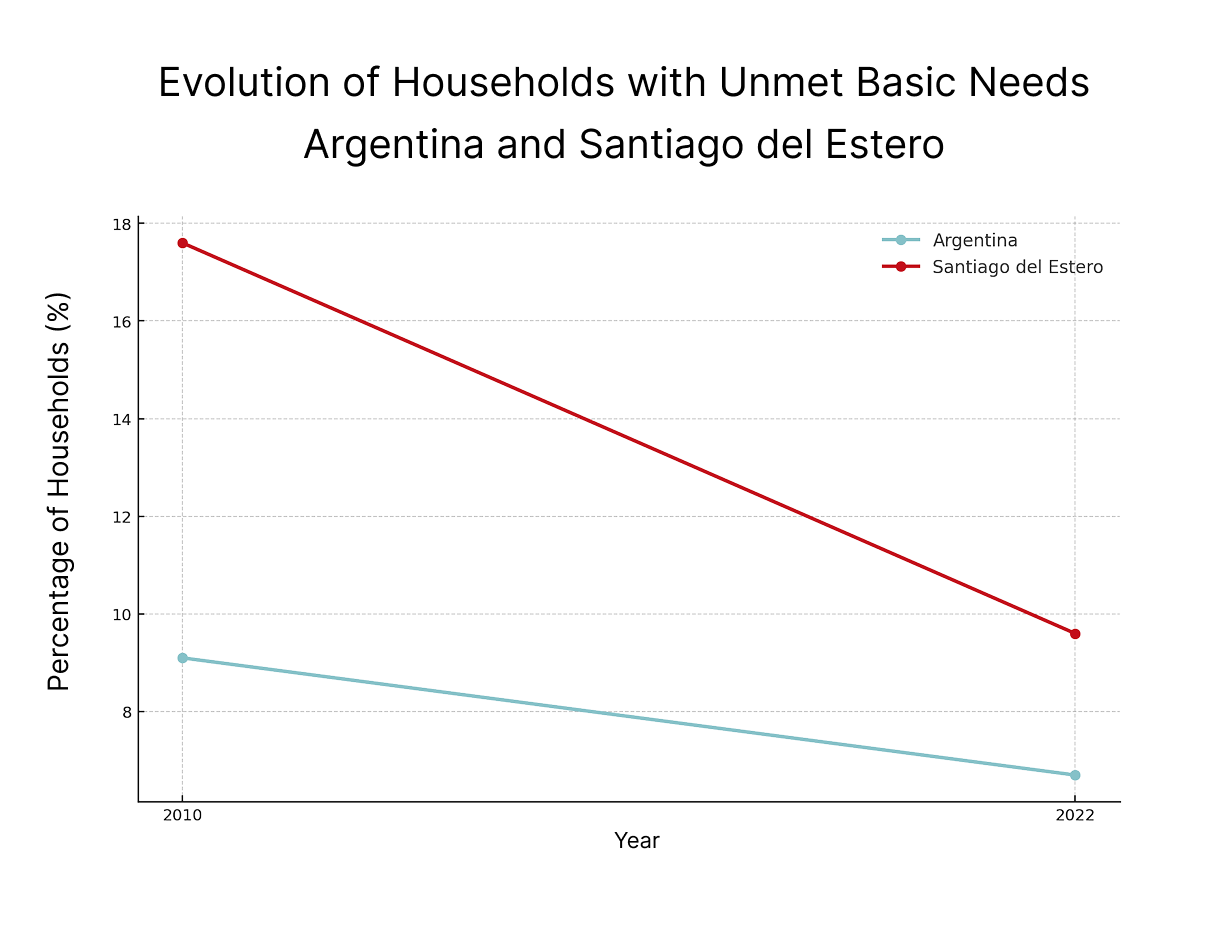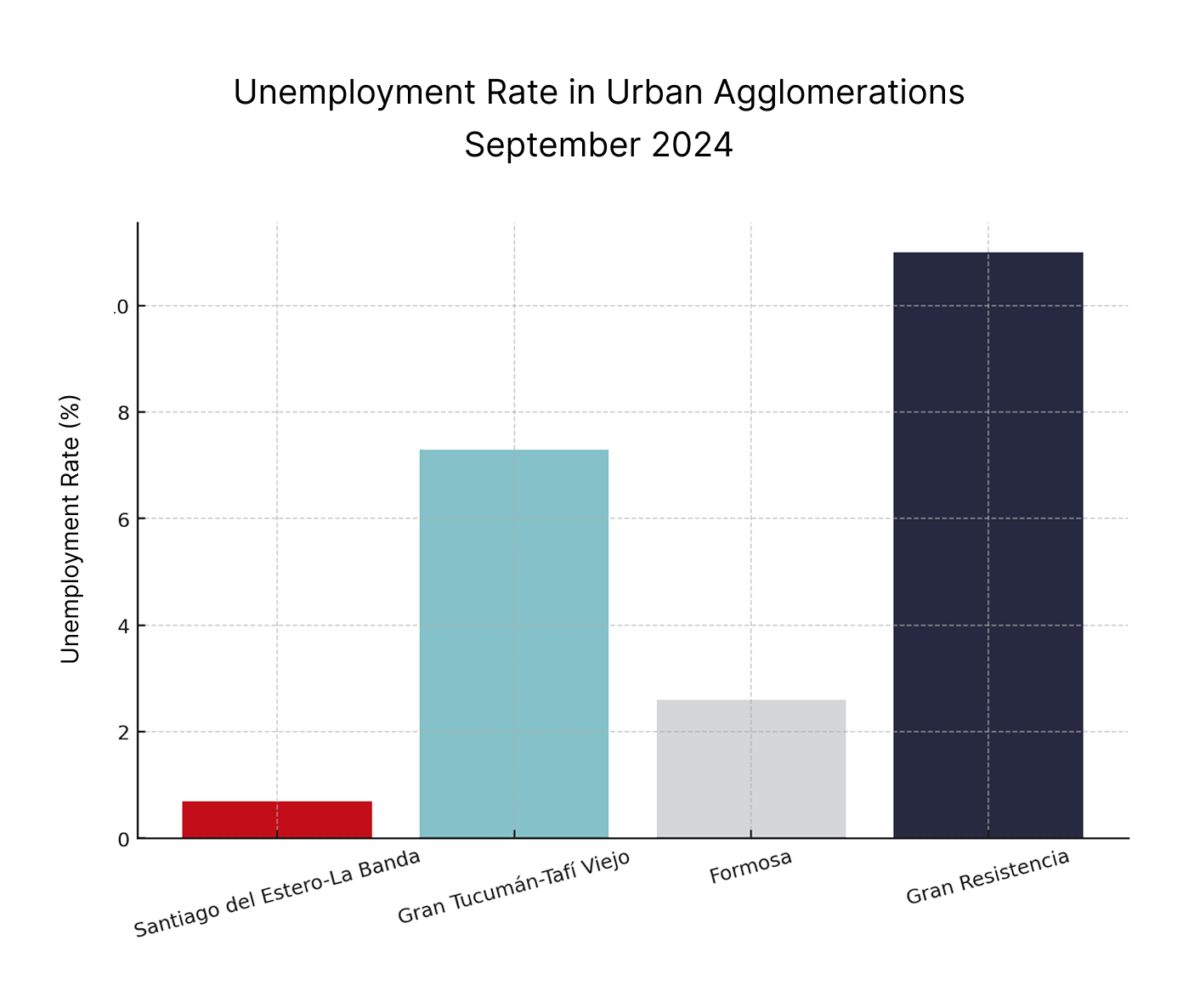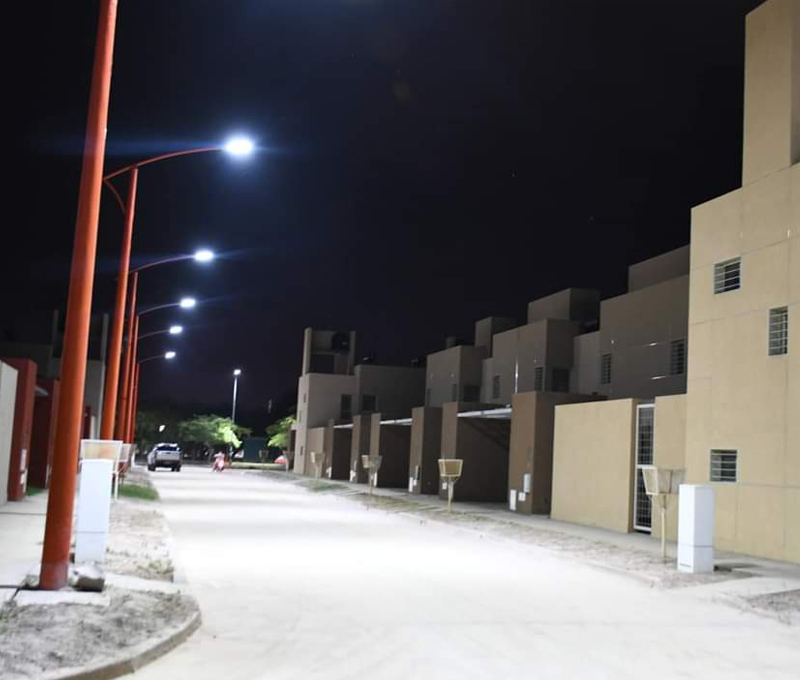After twenty years of management by the Frente Civico, Santiago del Estero has undergone a profound transformation. It has made significant advances in infrastructure, education, and health, recorded very positive economic indicators, and can transparently and efficiently account for its public finances. Below is a review of the most significant achievements:
Santiago del Estero is the province that increased the size of its economy the most between 2004 and 2021.
According to a joint study by the Economic Commission for Latin America (ECLAC) and the Ministry of Economy, Santiago del Estero, located in the Northern Argentine Region, is the Argentine province that grew the most between 2004 and 2021. During this period, the Gross General Product (GGP) of the province expanded by 96% compared to the national GDP, three times that of the Autonomous City of Buenos Aires for the same period and much more than the average of 39% for the country. Three other Argentine provinces follow: Chaco (63%), Tierra del Fuego (62%), Tucumán, and Jujuy (60%). The sectors with the highest growth were agriculture and livestock with over 300%, forestry and timber extraction which multiplied almost tenfold, and mining and quarrying or construction.


It has diversified its productive matrix.
In the last two decades, the province has aimed to diversify its productive matrix, which was previously predominantly rural, and developed active policies to stimulate industrial investments, promote tourism, and sustainable extractive activities. According to ECLAC, the challenges for the future are clear. Santiago del Estero is the Argentine province with the highest percentage of rural population, which is dispersed, especially in the dryland area, a region without artificial irrigation systems that depends on rainfall for its development, where the average density is less than 2 inhabitants/km², a figure similar to that of the Patagonian provinces. The geographical dispersion is partly due to the lack of access to infrastructure for a significant part of the territory and the ongoing difficulty in fully guaranteeing access to health and education in these areas. “Despite these restrictions, Santiago del Estero has important productive capacities, an increasingly widespread science and technology infrastructure, and significant experience generated in the development of various activities with a long provincial tradition, which constitute a promising starting point for a strategy aimed at promoting the productive transformation of its territory,” states the agency in the report.
A historic growth in Gross Value Added (GVA) is recorded
The Gross Value Added (GVA) of Santiago del Estero, the difference between production value and intermediate consumption value of a sector, has increased exponentially in the last two decades and stands out in northern Argentina.
A report by ECLAC states that between 2004 and 2021, the northern provinces grew at an annual rate of 2.5% — compared to 1.9% for the central provinces and 1.4% for the southern ones — reaching 12.7% in the distribution of GVA, the largest weight recorded for the region. How is this regional boom explained? Here are the two provinces that grew the most per year between 2004 and 2021: Santiago del Estero (4%) and Chaco (2.9%).


It has a limited and efficient public sector
According to data from the Ministry of Economy’s Economic Policy Secretariat, Santiago del Estero sets an example when analyzing the weight and efficiency of its public sector. The public sector’s participation in the provincial GVA is only 3.04% (2021), the lowest figure nationally. This number becomes even more significant when compared to other northern provinces such as Catamarca, where the public sector’s participation in the provincial GVA exceeds 14%, or the City of Buenos Aires, which, despite its economic and demographic importance, reaches only 5.92%.
It climbs positions in the Argentine export ranking
According to the INDEC ranking evaluating Argentine exports, Santiago del Estero experienced record growth in its exports during the first half of 2024, registering a 74.3% increase compared to the same period in 2023. With exports totaling US$718 million, Santiago del Estero positioned itself as the province that grew the most in percentage terms in the country. This performance was primarily driven by corn, which accounted for 65.9% of exports, and soybeans, with a significant increase of 364.7%.
The destinations China, ASEAN, the rest of ALADI, Maghreb and Egypt, the Middle East, and Mercosur concentrated 82.0% of the province’s exports, followed in importance by the European Union and USMCA.


The percentage of households with unsatisfied basic needs has fallen
According to the 2022 census, the percentage of households with unsatisfied basic needs (NBI) in Argentina decreased from 9.1% in 2010 to 6.7% in 2022. Santiago del Estero is the province that best positioned itself in this trend, with the largest drop of over 8 points in absolute terms: from 17.6% in 2010 to 9.6% in 2022.
Santiago del Estero-La Banda is the urban conglomerate with the lowest unemployment in Argentina
According to the Permanent Household Survey (EPH) published by the National Institute of Statistics and Censuses (INDEC) in September 2024, the jurisdiction of Santiago del Estero-La Banda stands out with the lowest unemployment rate in the country, at 0.7%, contrasting with other urban agglomerations in the same region, such as Gran Tucumán-Tafí Viejo (7.3%), Formosa (2.6%), and Gran Resistencia (11%).


It has the highest percentage of homeowners in the country and has improved housing quality
According to the latest census conducted by INDEC in 2022, Santiago del Estero leads the list of provinces with the highest number of people with access to their own housing: 83.7% of Santiago del Estero residents are homeowners, while in the Autonomous City of Buenos Aires, only 52.9% are. This figure is also well above the national average of 65.5%. Furthermore, according to the comparison between the last two censuses, between 2010 and 2022, precarious housing tenure was halved (from 16% to 8%), the proportion of households living in satisfactory quality housing increased by 5 percentage points (from 80.5% in 2010 to 85.3% in 2020), and households residing in precarious housing, built with non-durable materials, remain stable at around 4% of the total.
It has a demographic bonus essential for sustaining development
Santiago del Estero has a demographic bonus, meaning a phase where the balance between age groups in the population generates opportunities for economic development. “The dependency ratio between the working-age population (young and adult people) and the dependent population (children and the elderly) has a relatively higher weight of the former compared to the latter, with a trend towards an increase by 2030. This demographic phase of opportunities depends on leveraging it through job creation to enhance local growth and development,” states the report “Regional and Participatory Diagnosis on the Situation, Achievements, and Challenges of Social Development in Santiago del Estero” prepared by the Argentine Social Debt Observatory of the Catholic University of Argentina (ODSA-UCA).

News
The Government of Santiago del Estero exempts the agricultural sector from paying Gross Income Tax for six months
The strong housing policy promoted by Governor Gerardo Zamora allowed…
“Santiago is one of the provinces with the lowest tax burden in the entire country, as confirmed by Argentina’s leading digital wallet”
This is indicated by the report conducted by the Economic Commission for Latin America and the Caribbean (ECLAC)…
Zamora announced the reactivation of halted national public works and the incorporation of new projects throughout the province
In times of great uncertainty and amid a regrettable economic crisis affecting the Republic of Argentina…


